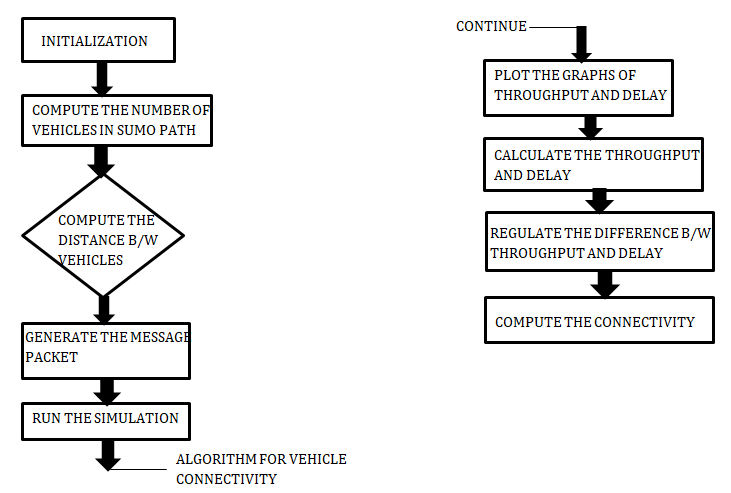Traffic Congestion and Accident Prevention Analysis for Connectivity in Vehicular Ad-hoc Network
Objective
The main objective of this project is “To improve the connectivity between vehicle to vehicle as long as they are connected to each other and to reduce the road accidents with the help of improving connectivity.”
Abstract
Vehicular Ad-hoc networks are a part of mobile Ad-hoc Network. The VANET has an unstructured formation of wireless networks for the transmission of data to the field vehicles. VANET system has some predicted and fundamental data which includes Vehicle movement in two directions because the mobility is predictable. Vehicular Ad Hoc Networks (VANETs) is the subclass of mobile ad hoc networks. We can increase a number of technical challenges such as improving VANET Connectivity.
Road accident and traffic congestion is a current application in the network of vehicular Ad-hoc network. We improve the connectivity between vehicle to vehicle as long as they are connected to each other and the future performance of the applications for the connectivity of the vehicles in the urban areas and Highways.
Keywords: VANET, MANET SUMO, NETSIM.
NOTE: Without the concern of our team, please don't submit to the college. This Abstract varies based on student requirements.
Block Diagram

Specifications
HARDWARE SPECIFICATIONS:
- System: Pentium IV 2.4 GHz.
- Hard Disk: 40 GB.
- Floppy Drive: 1.44 Mb.
- Monitor: 15 VGA Colour.
- Mouse : Logitech.
- Ram: 512 Mb.
SOFTWARE SPECIFICATIONS:
- Operating system: Windows XP/7/LINUX.
- Implementation: NS2
- NS2 Version: NS2.2.34
- Front End: OTCL (Object Oriented Tool Command Language)
- Tool: Fedora (To simulate in Linux OS)
Learning Outcomes
- What is vehicular ad-hoc network?
- How to run the simulation?
- What is SUMO and NETSIM?
- How to generate the message packet?
- Difference between throughput and delay.
- What is Tomcat server and how they can work?
- What type of technology versions is used?
- Data Parsing Front-End to Back-End.
- Need of Eclipse-IDE to develop a web application.
- Working Procedure.
- Testing Techniques.
- Error Correction mechanisms.
- How to run and deploy the applications?
- Introduction to basic technologies used for.
- How project works?
- Input and Output modules.
- How to test the project based on user inputs and observe the output?
- Practical exposure to software tools and solution providing for real time problems working with team/ individual work on Creative ideas.
- Learn about types of algorithms and how to use?
- Project Development Skills:
- Problem analyzing skills.
- Problem solving skills.
- Creativity and imaginary skills.
- Programming skills.
- Deployment.
- Testing skills.
- Debugging skills.
- Project presentation skills.
- Thesis writing skills.





 Paper Publishing
Paper Publishing
